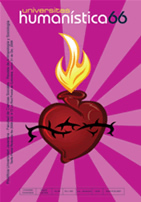The School of Death: A Look From Forensic Anthropology
##plugins.themes.bootstrap3.article.details##
Through exercising anthropology in a legal context, I was able to observe the existence and consequences of cruel and violent acts carried out by non-governmental armed groups – in this case paramilitary – which due to their structure, methodology and organization allow me to draw a comparison of these acts with what I have called a “school of death” with the functionality of an academic school – for life. I reflect about the position of the victim, the aggressor and mine as a forensic expert and a person that is interfering with this School of Death. The former, based on the description and study of a forensic case that represents one of several judicial diligences carried out by state forensic teams before Law 975 of 2005 took effect, known as the “Law of Justice and Peace”, which, according to the legal text, “has as an objective to facilitate the peace processes and the individual or collective reincorporation into civil life of members of armed groups at the margins of the law, guaranteeing the right of the victims for truth, justice and reparation.”
Víctima, victimario, violencia, subjetividad, escuela, muertevictim, aggressor, violence, subjectivity, school, deathvitima, algoz, violência, subjetividade, escola, morte


